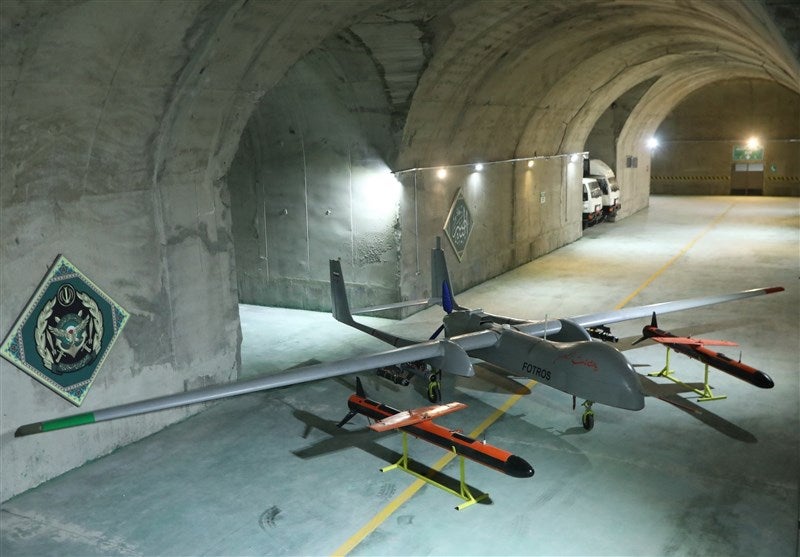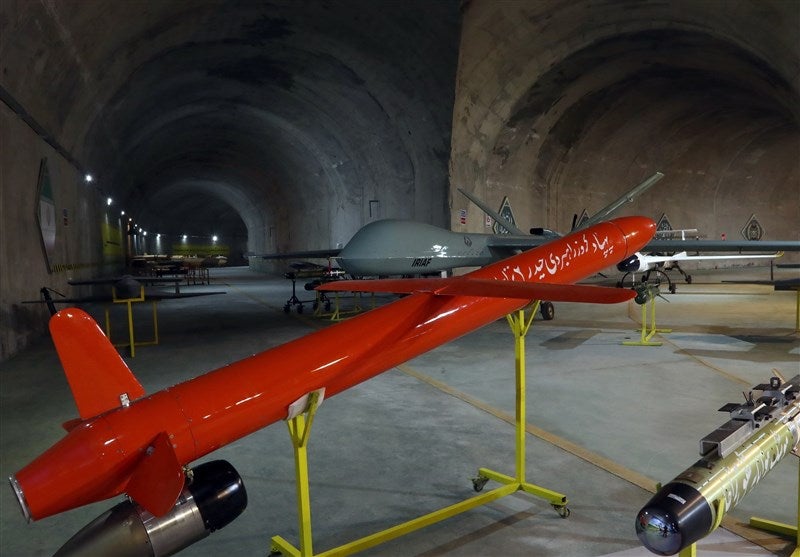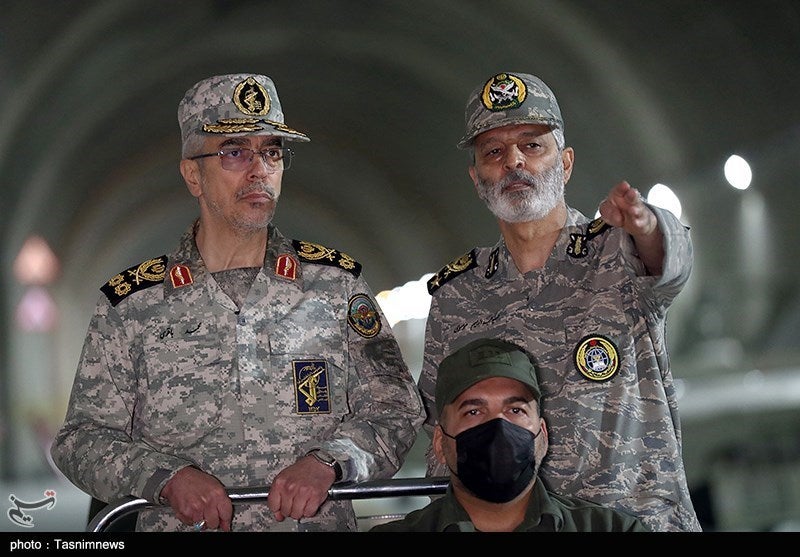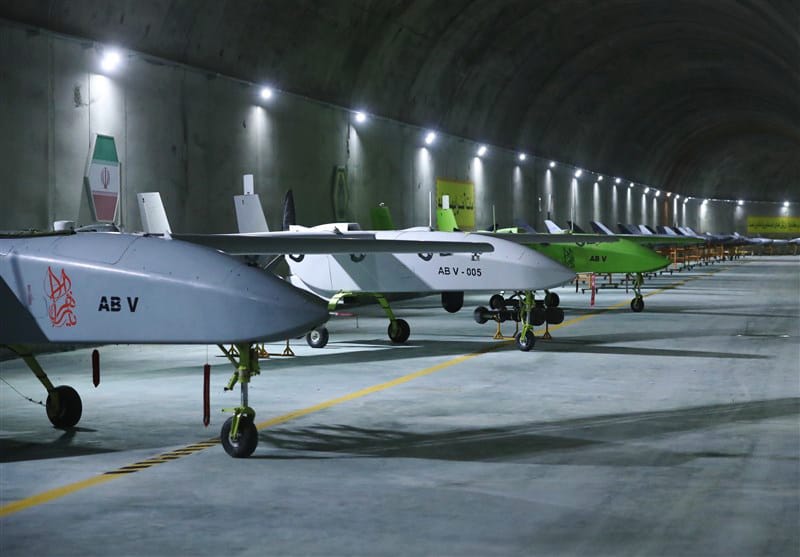Iran Releases Images of Secret “Strategic UAV Base 313”
Iranian state television (IRIB) has released images of a secret military base it says is hidden somewhere in the middle of the Zagros mountain range that runs along the country’s Persian Gulf coast. While the exact location of the secret underground base, known as “Strategic UAV Base 313,” was not revealed, an IRIB TV reporter said they were transported to the base by helicopter from the city of Kermanshah and that he was blindfolded before he left so he wouldn’t learn where the underground base was during the 45-minute journey. The reporter was accompanied by Iran’s Chief of Staff Mohammad Bagheri and Commander-in-Chief of Iran’s Armed Forces Major General Abdolrahim Mousavi, who said he was only allowed to open his eyes when they arrived at the base.
The report shows UAVs outfitted with missiles lined up in a vast tunnel alleged to be hundreds of meters underground in images released to the press by Iranian State Television (IRIB). Around 100 drones are allegedly stationed at this underground location, which is protected from unexpected air attacks, according to the media outlet. As can be seen in the published images, Ababil-5 and Kaman-22 drones, Fotros reconnaissance and combat drones, Mohajer-6 S drones armed with Almas (diamond) anti-tank missiles, Karrar, Omid and Arash class suicide drones were also shown at the base.

At the military base, two new weapons developed by Iran were also unveiled. The Heidar-1 cruise missile, which was carried by Keman-22 and Fotros drones, was the first of these weapons. The missile in question has a range of 200 kilometers and a speed of 1000 kilometers per hour when it hits the target, according to information provided by the Islamic Republic news agency. The Heidar-2, a reworked variant of the Heidar-1 cruise missile into a drone version, was the second of these weapons. While no technical information concerning the aforementioned missile are currently available, it has been reported that Haydar-2 can be mounted on helicopters.

Another key element concerning the underground UAV base in question is that it is operated by the Iranian Armed Forces. Why is this significant? Because the Iranian Revolutionary Guards have been developing Iran’s drone program since its inception, and they are mostly responsible for its utilization. This is a significant development in Iran’s unmanned aerial vehicle program.

“Our greatest achievement is that we are not dependent on any place,” stated Major General Abdolrahim Mousavi, Commander-in-Chief of the Iranian Armed Forces, in a statement following the unveiling of the underground facility. He sent a message to the recent strikes on Iran’s critical military facilities, saying, “The development of the Iranian Armed Forces’ UAV capabilities cannot be stopped.” Mousavi said the Armed Forces General Staff and the Armed Forces of the Islamic Republic of Iran accepted the nature of new wars and will continue to improve Iran’s unmanned aerial vehicles as much as possible, citing the key role of drones in wars such as Karabakh and Ukraine, whether in directing reconnaissance and artillery fire or destroying enemy assets themselves.
The images of a secret base filled with hundreds of armed and unarmed UAVs of its armed forces were shared with the public after Iran experienced a number of important events. In summary, these events include Greece’s seizure of Iranian oil tankers at the request of the US, the assassination of Colonel Seyyad Hodayi, a member of the Revolutionary Guards Army, the death of an engineer after the alleged attack on the Parchin Military Research Facility, and the suspension of the ongoing Vienna talks. For these reasons, Iran is attempting to demonstrate that, despite its losses and negative experiences both inside and outside the country, it still has significant strength in the area by sharing its capabilities with the public.

